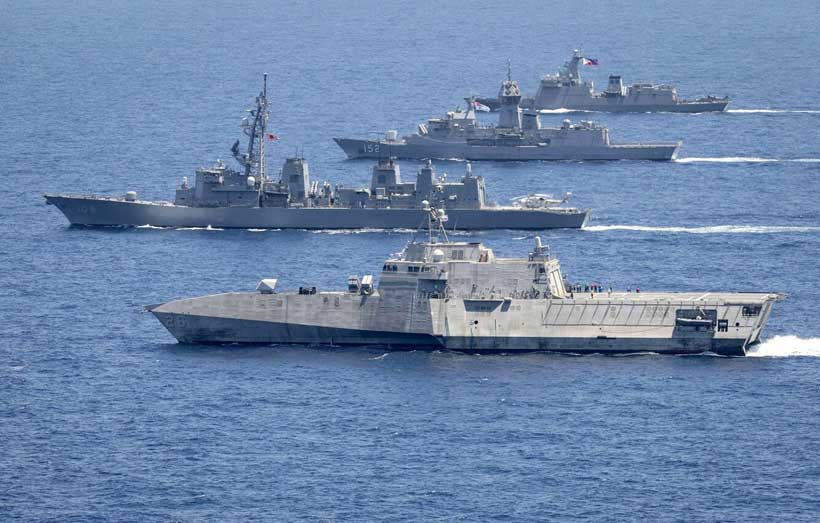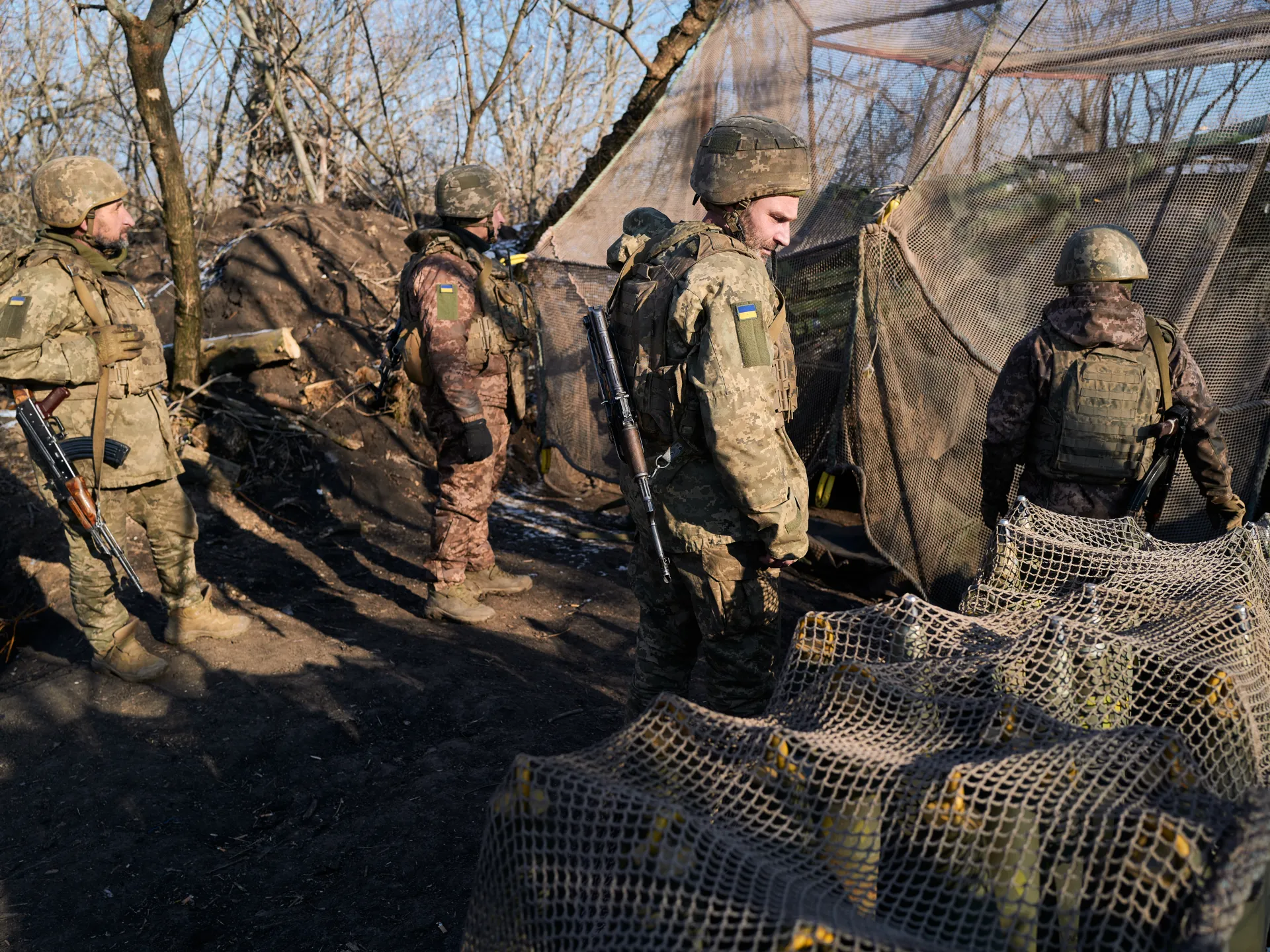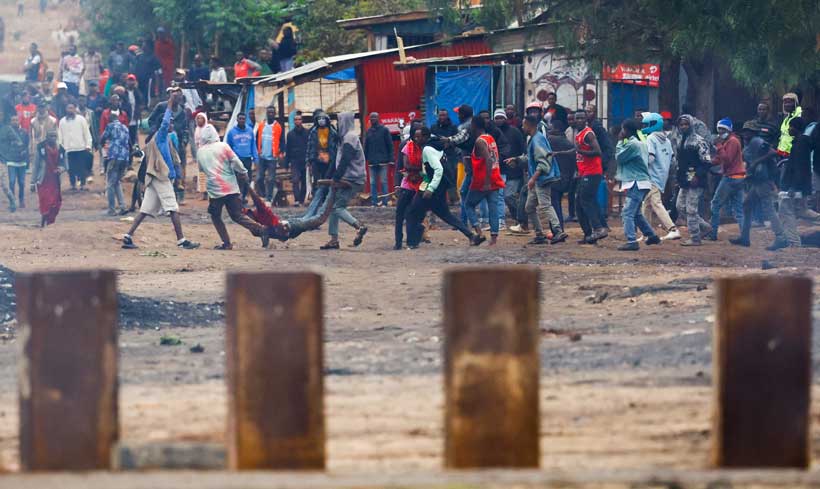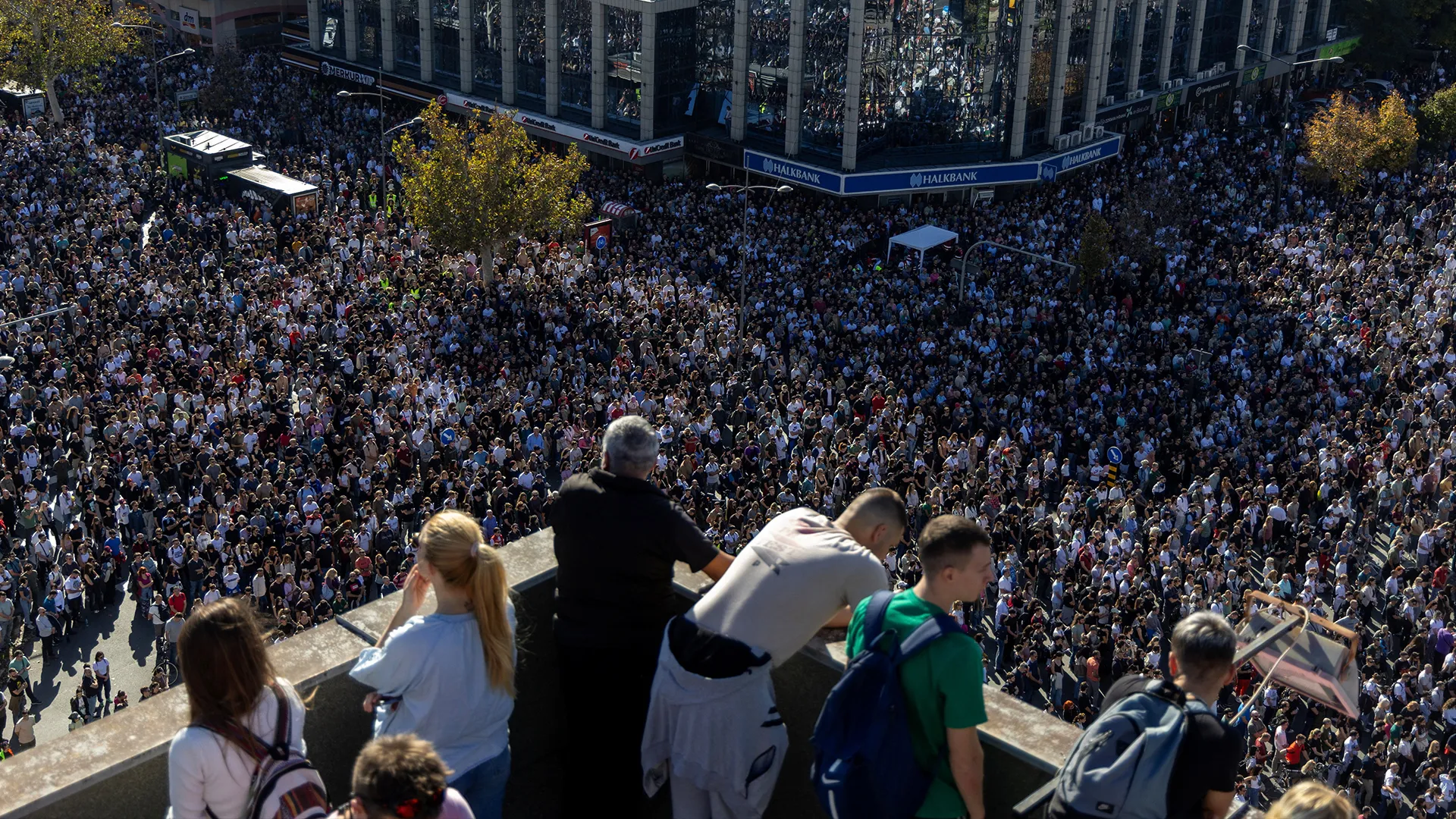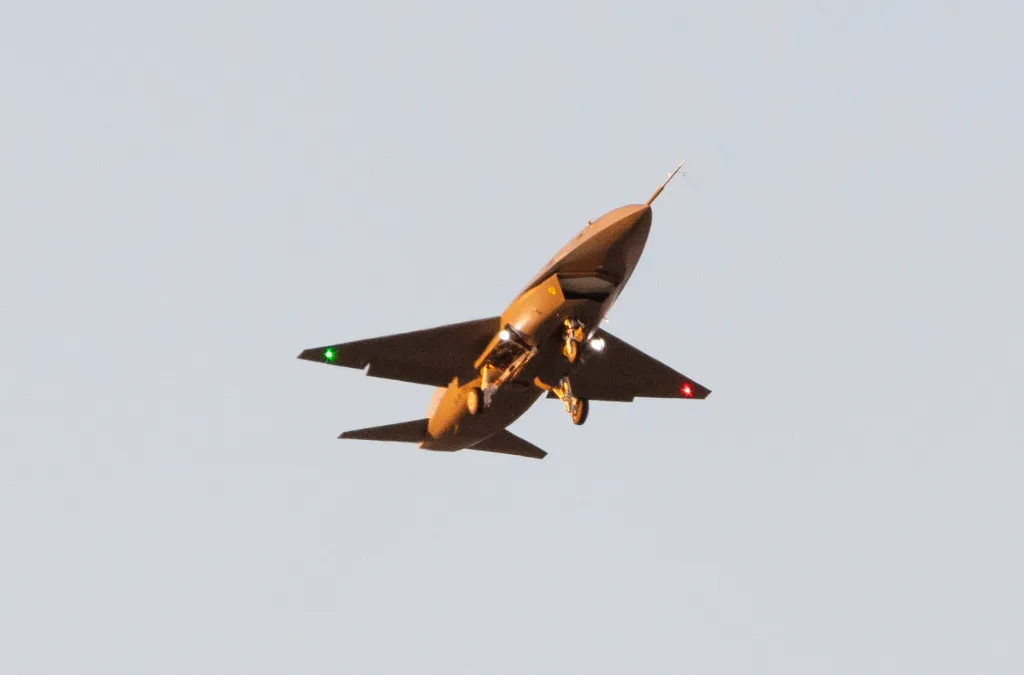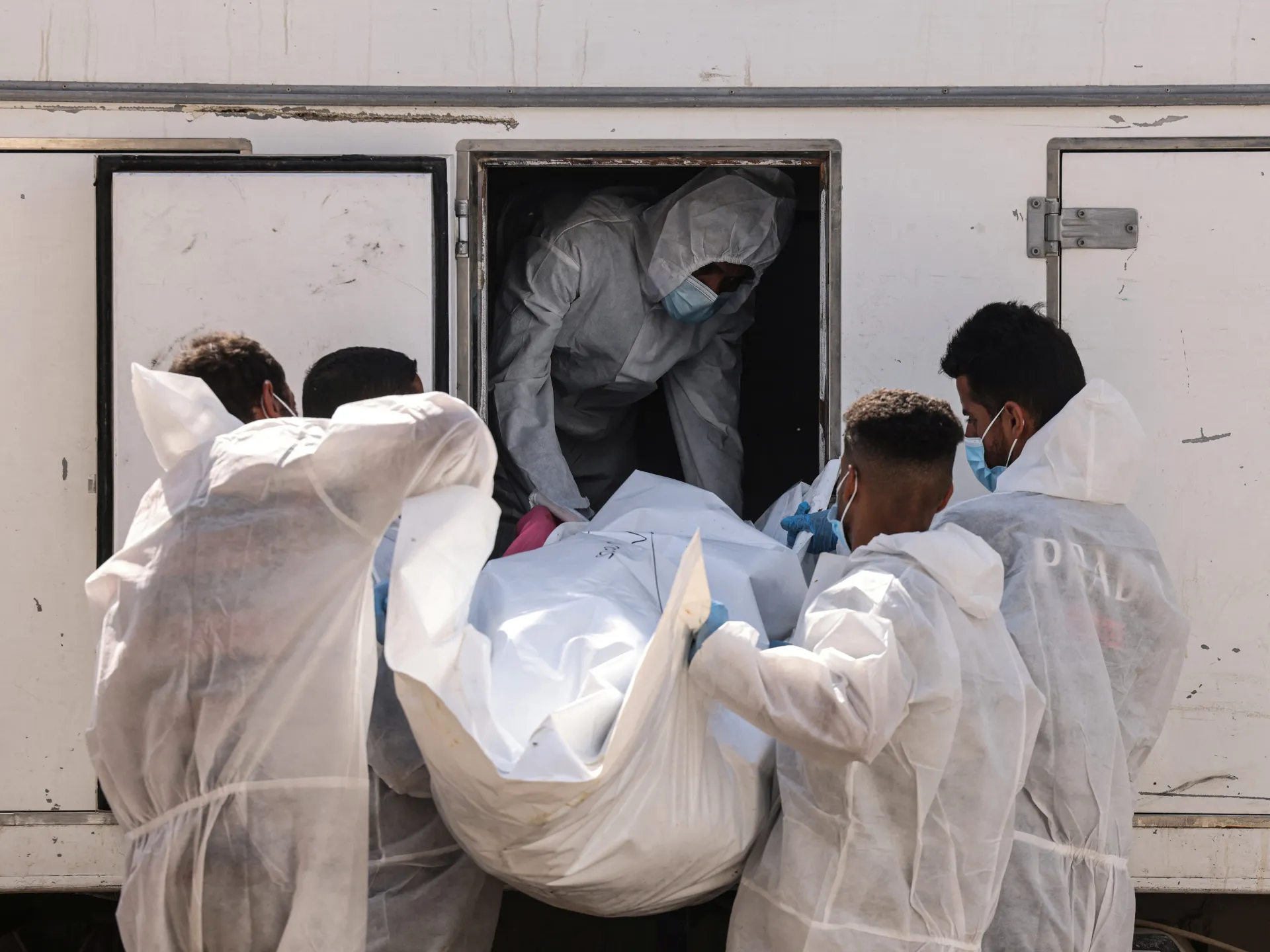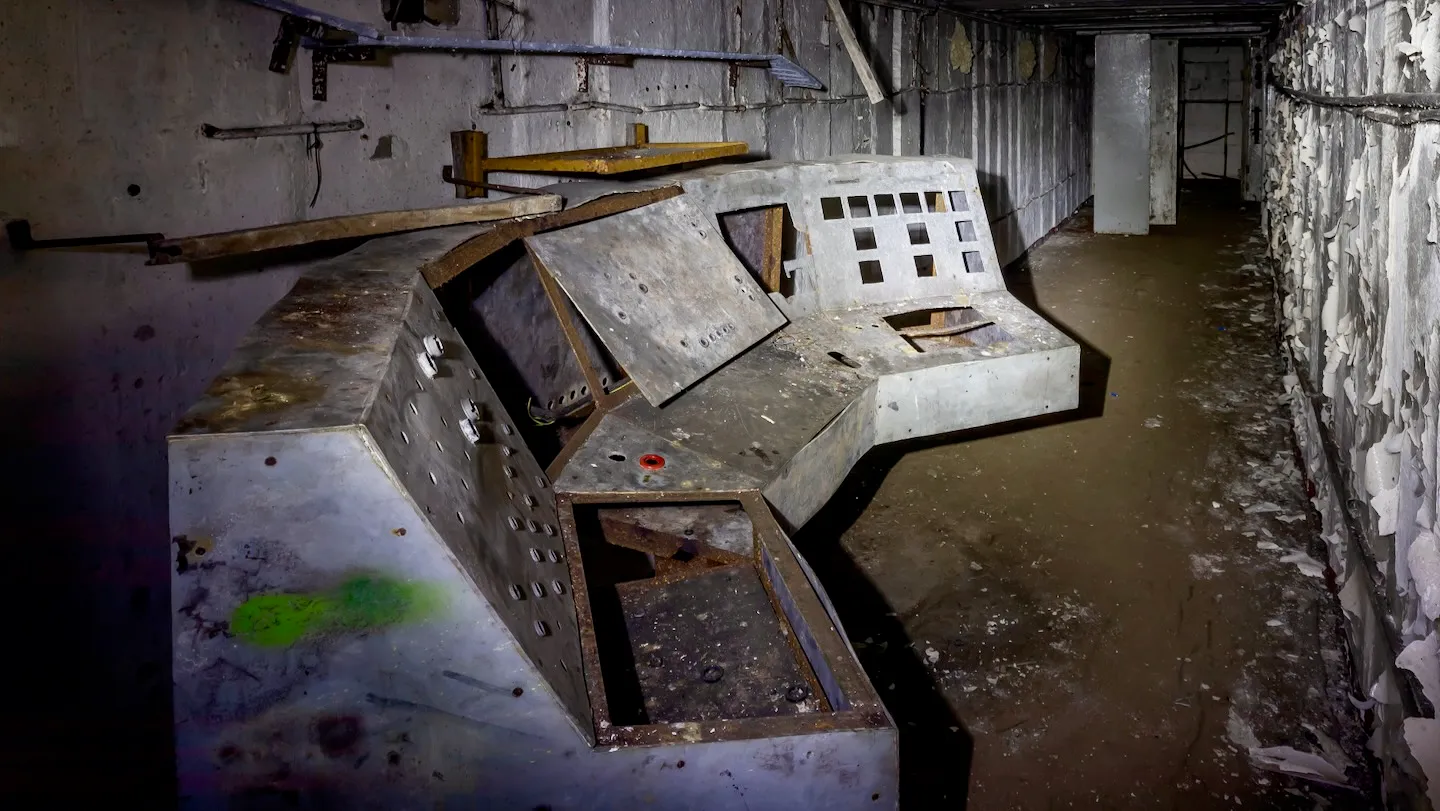Executive Order To Go Back To Steam Catapults On New Aircraft Carriers Coming: Trump
President Donald Trump says he plans to sign an executive order that would compel the U.S. Navy to use steam-powered catapults and hydraulic elevators on new aircraft carriers. Trump has railed against the Electromagnetic Aircraft Launch System (EMALS) catapults and Advanced Weapons Elevators (AWE) on the USS Gerald R. Ford, the Navy’s newest supercarrier, for years now. Ford‘s catapults and elevators have faced reliability and maintenance issues, but swapping out these features, even just for future ships in the class, would involve an extremely costly and time-consuming redesign that would further delay new carriers entering service.
Trump announced his intention to issue an executive order regarding carrier catapults and weapons elevators during often free-wheeling remarks to servicemembers aboard the Nimitz class carrier USS George Washington earlier today. The George Washington is currently in port in Yokosuka, Japan, where it is forward deployed. The President is in Japan as part of a larger tour of Asia.

The Navy currently has 10 Nimitz class carriers, which have steam-powered catapults and hydraulic weapons elevators. In addition to the in-service USS Gerald R. Ford, there are three more Ford class carriers now in various stages of construction. The Navy’s stated plan has been to eventually acquire at least 10 Ford class flattops to replace the Nimitz class.
“I’m putting out an order, I’m going to sign an executive order, when we build aircraft carriers, it’s steam for the catapults and it’s hydraulic for the elevators,” Trump said after suggesting, without elaborating, that water could disable Ford‘s electromagnetic systems. “We’ll never have a problem.”
“I’m gonna put in an order, seriously,” the President also said. “They’re spending billions of dollars to build stupid electric. And the problem, when it breaks, you have to send up to MIT, get the most brilliant people in the world, fly them out. The steam, they said they can fix it with a hammer and blowtorch. And it works just as well, if not better.”
“They had steam, which worked so beautifully, and it has for 50 years, right? So we’re gonna go back. Seriously, fellas, I want to make that change. I’m gonna do an executive order,” he added. “I’m not going to let them continue to do this thing. They’re trying to make it work, they’re trying so hard, and they have something that’s perfect. So we’re going to go back on that and the magnets.”
As noted, this is hardly the first time Trump has criticized the Ford class design’s electromagnetic catapults and elevators, stretching back all the way to his first term. In 2017, he also indicated that he would order the Navy to abandon those features, but never followed through. If an executive order on this matter is now indeed coming, what it will actually direct the service to do remains to be seen.
TWZ has reached out to the White House, the Pentagon, and the Navy in regards to Trump’s remarks. The Pentagon redirected us to the Navy.

There is real truth behind the President’s criticisms about the catapults and weapons elevators on Ford, which is also known by its hull number CVN-78. TWZ has covered the issues with both of these systems, as well as other long-troubled aspects of the ship’s design, in detail for years now. The Navy has been working to mitigate these problems, but has continued to face challenges at least as recently as last year.
During Ford‘s first full-length deployment between May 2023 to January 2024, “the ship and its embarked air wing completed 8,725 catapult launches using the EMALS,” according to the most recent annual report from the Pentagon’s Office of the Director of Test and Evaluation (DOT&E), which was published earlier this year. “However, DOT&E has not received sufficient data to update the reliability statistics reported in the FY23 [Fiscal Year 2023] Annual Report. Despite engineering upgrades to hardware and software, reliability has not appreciably changed from prior years and reliance on off-ship technical support remains a challenge. NAVAIR [Naval Air Systems Command] is continuing development on improvements.”

“The Navy reported that, during CVN 78’s deployment, the ship’s weapons department conducted 11,369 AWE runs, moving 1,829,580 pounds of ordnance to the flight deck. However, the Navy has yet to build and transfer ordnance to the flight deck at rates reflective of the Design Reference Mission,” DOT&E’s report also said. “Of note, the crew is reliant on off-ship technical support for correction of
hardware and software failures. DOT&E expects the SGR [sortie generation rate] tests [planned for Fiscal Year 2025] to be the first operationally representative demonstration of high ordnance throughput.”
In principle, EMALS, together with the Advanced Arresting Gear (AAG), is supposed to give Ford class carriers a significant boost in capability over their predecessors when it comes to the speed at which they can launch and recover aircraft. The software-controlled EMALS and AAG, the latter of which has also faced issues over the years, have lower reset times than the steam-powered systems found on Nimitz class carriers.

The EMALS and AAG can also be more fine-tuned in terms of the forces they exert on aircraft during launch and recovery, expanding the range of types they can accommodate and adding additional margins of safety. This notably helps open the door for embarking smaller and more fragile types on Ford class carriers in the future. This flexibility could be particularly critical for supporting carrier-based drone operations down the line. Wear and tear on individual aircraft can also be reduced.
The electromagnetic AWEs are intended to further help improve the overall efficiency of flight operations on Ford by reducing the time it takes to get ordnance and other stores to where they need to go.

As DOT&E has made clear, however, the EMALS and AWEs, as well as the AAG, have yet to live up to their full potential, despite Ford now being regularly deployed, including in support of combat operations.
There is something of a precedent for significant changes to the Ford class design. The USS Gerald R. Ford is now set to be the only ship in the class with another long-troubled feature, a Dual Band Radar (DBR) system, which you can read more about here. All future ships in the class are now set to have a variant of the Enterprise Air Surveillance Radar (EASR) in place of the DBR.

That being said, replacing the EMALS (and likely the AAG as a result) and the AWEs on the Ford, or any of the other ships in the class currently under construction, would be an immensely more complicated, costly, and time-consuming proposition. The catapults and elevators are far more deeply integrated into the core structure of the ship than the DBR. Even just changing the design for future carriers in the class would be extremely complex. A hybrid arrangement involving a mix of steam and EMALS capabilities might be an option, but would then create two systems that need to be integrated together, as well as sustained once operational.
Delivery of additional Ford class carriers has already been significantly delayed. The prospective delivery date for the second ship in the class, the future USS John F. Kennedy, has already slipped to March 2027, nearly three years later than originally expected. The Navy told USNI News earlier this year that it is looking for ways to shift that timetable back to the left.

Any massive changes to the underlying Ford class design of the ships could easily have cascading effects in that regard, on top of cost growth and other issues. This, in turn, could upend Navy plans for replacing retiring Nimitz class carriers at a time when the service’s carrier fleet overall has been under particular strain due to high operational demands in recent years. Just last week, the Pentagon ordered Ford to cut its scheduled cruise in Europe short and set sail for the Caribbean to support expanded counter-drug operations in that part of the world.

Beyond just his vocal opposition to Ford‘s electromagnetic catapults and weapons elevators, Trump has a long history of being particularly outspoken when it comes to U.S. naval ship design and force planning, as well as the aesthetics of those vessels.
Last Friday, The Wall Street Journal reported that the White House and the Navy are in the early stages of hashing out a larger naval force restructuring plan for what has been termed a future “Golden Fleet.”
“Specifically, the White House and the Pentagon are in early talks about building a heavily armored, next-generation ship that could weigh as much as 15,000-20,000 tons and carry more powerful weapons, even potentially hypersonic missiles, in larger numbers than current destroyers and cruisers, the current and former officials said,” according to that report.
This lends some credence to off-hand comments from Trump back in September, where he claimed to be talking with Navy Secretary John Phelan about adding “battleships” with gun-centric armament and heavily armored hulls back into America’s combat fleets. In TWZ‘s deep analysis of Trump’s remarks at the time, we highlighted that battleship-like arsenal ships primarily packed with Vertical Launch System (VLS) cells have been proposed as part of the Navy’s future force structure on various occasions in the past.

The Golden Fleet plans, at least as they exist now, also reportedly put heavy emphasis on uncrewed vessels as part of a “barbell-shaped” overall force structure, “with large ships at one end and small ships at the other,” according to The Wall Street Journal.
It is also worth noting here that the Chinese People’s Liberation Army Navy (PLAN) has skipped steam-powered catapults entirely in its carrier force plans. The PLAN has moved straight from short take-off, but arrested recovery (STOBAR) carriers with ski jump bows, and no catapults at all, to the new EMALS-equipped Fujian. China’s new supersized Type 076 amphibious assault ship also has a single catapult, which is understood to be an EMALS type.
Other countries are also looking at EMALS-type catapults for future carriers and other naval vessels.
Altogether, it still remains to be seen what Trump directs the Navy to do with regard to carrier catapults and elevators, or if the promised executive order materializes at all. Even if the President does not ultimately order the Navy to go back to steam-powered catapults and hydraulic elevators, his influence could still appear in other ways in the configuration of future American supercarriers.
Contact the author: [email protected]

